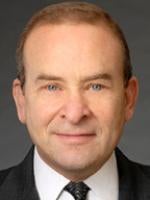The Department of Health and Human Services (HHS) issued proposed regulations in the Federal Register on December 7, 2012 which provide guidance regarding the Transitional Reinsurance Program (the Program). The Program will be effective for three years: 2014–16. It will impose heavy fees upon employer-sponsored health care plans, whether insured or self-insured.
HHS estimates that the fee will be equal to $63 per year for each person covered under an employer-sponsored health care plan (including dependents in addition to employees and retirees). However, the fee does not apply to retirees and dependents for whom Medicare is the primary payer. It is estimated that the fee will be reduced to $42 per year in 2015 and $24 per year in 2016. The rules for determining the number of persons covered under the plan are similar to the rules required for determining the number of covered lives for purposes of the Patient Centered Outcomes Research (PCOR) fee, which became effective in 2012, and is due to be paid on July 31, 2013, in the amount of $1 per covered life. Those rules provide several alternative permissible methods of counting covered lives. (This subject is discussed in detail in the April 20, 2012, edition of Corporate and Financial Weekly Digest.)
Insurance companies are responsible for paying the fees in the case of insured plans. In the case of self-insured plans, though the plan is liable, a third-party administrator or other third party may make the payments with respect to the plan. These entities will be required to submit enrollment information by November 15, 2014. HHS will notify the entities within a month thereafter of any contributions due, which must be paid within 30 days of the notification. The fee is generally applicable with regard to plans which provide major medical coverage and health reimbursement accounts, though a health reimbursement account that is integrated with a group health plan is excluded from the fee. Health savings accounts and flexible spending accounts are also excluded. Wellness programs and employee assistance programs that do not provide major medical coverage are also excluded, as are group health plans that provide only “excepted benefits.”
The Program was enacted as part of the Patient Protection and Affordable Care Act. Its principal purpose is to collect $20 billion to cover reinsurance payments to insurers in the individual market who are expected to have higher-cost enrollees. It is intended that this will stabilize premiums for coverage in the individual market. Reinsurance programs are to be established in every state, either by the State or by HHS in those states that do not do so. Presumably many people buying insurance through the exchanges are expected to have previously been uninsured and perhaps are bad risks, and/or unable to secure coverage through their employers (such as part-time or seasonal employees). This is expected to result in increased costs for insurers, at least a portion of which can be offset by payments from the Program.
The proposed regulations can be found here.



 />i
/>i

